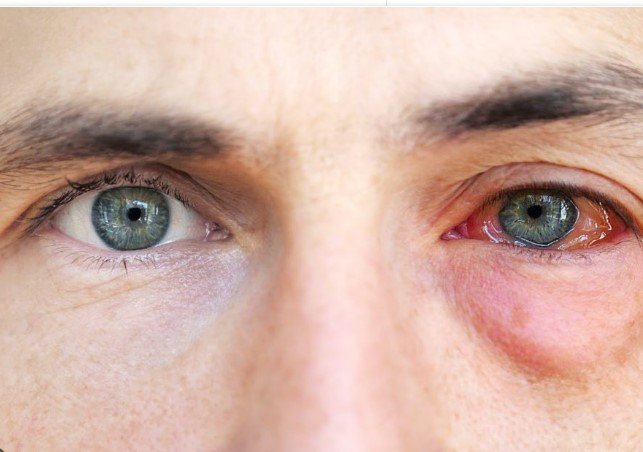Allergens and Irritants That Can Cause Red Eyes

Red eyes or ocular hyperemia can be an uncomfortable condition experienced by many individuals. While it may seem minor, this condition could signal underlying problems when caused by allergens and irritants. Knowing the various causes may assist in the proper management of the condition and improve the eyes’ well-being. Here are some of the allergens and irritants that might cause red eyes:
Pollen
Tree, grass, and weed pollens may cause problems for those who suffer from seasonal allergies. This pollen can initiate an allergic reaction that leads to redness, scratching, and watering of the eyes. Eye irritation is more common in spring and autumn when there is a higher level of pollen within the atmosphere. Individuals sensitive to pollen may benefit from staying indoors during peak pollen times and using air purifiers to reduce indoor allergens.
Read also: Telehealth Services and Medicare Advantage: What You Need to Know
Dust Mites
Dust mites are small insects that often live in homes and are common in bedding, carpets, and upholstered furniture. Their waste products can cause allergies and make the eyes red and itchy. Preventive measures against dust mites include cleaning and vacuuming, using dustproof pillows and mattresses, and keeping humidity levels in the home low.
Pet Dander
For people who are around pets, the fur or skin shedding from cats, dogs, or any other animal has the potential to cause allergies. Pet dander is composed of loose fur, skin cells, and damp secretions, which leads to itchy eyes in some people. Other signs of pet allergies are eye redness, sneezing, and stuffy nose. To deal with pet-borne allergies, confine animal access to bedrooms, frequently bathe the pets, and keep the home environment clean.
Smoke
Smoke from cigarettes, campfires, and other sources might affect the eyes, causing them to become red and uncomfortable. Smoke contains many toxic substances, such as formaldehyde, that result in inflammation and irritation. Symptoms can be relieved by avoiding contact with smoke and allowing for adequate airflow in the rooms where people spend the majority of their time.
Pollution
Other environmental factors that could harm the eyes include emissions from vehicles, refineries, and various industrial settings that release fumes into the air. These particulates and chemicals might cause red eyes as the body uses inflammation to try and protect the eyes. To avoid the effects of pollutants, people in populated areas could wear sunglasses outside and use artificial tears when their eyes become irritated.
Chlorine
Chlorine is commonly added to swimming pools to disinfect water, but it may cause irritation of the eyes. For people with sensitivity to chlorine, the chemical could cause reddening and irritation of the skin around the eyes. Preventing discomfort as a result of chlorine includes swimming with goggles and rinsing the eyes with clean water after coming in contact with the chemical.
Treatment Options
A doctor might recommend eye drops containing antihistamines to soothe the eyes, reducing redness and itching. Over-the-counter lubricating eye drops can help moisten dry eyes and reduce irritation. If ocular hyperemia is due to a bacterial infection, such as conjunctivitis, antibiotic eye drops should be effective. For viral infections, specific antiviral medications might be prescribed. For those who wear contacts, switching to daily lenses or taking breaks from wearing them can help prevent irritation.
Get Professional Care for Red Eyes
Ocular hyperemia is one of the symptoms of eye irritation that some people experience due to allergens and other particles. Understanding the causes and ways of preventing the condition can help lessen occurrences of this issue and improve eye health. Schedule an appointment with an optometrist to get proper eye care treatment.




